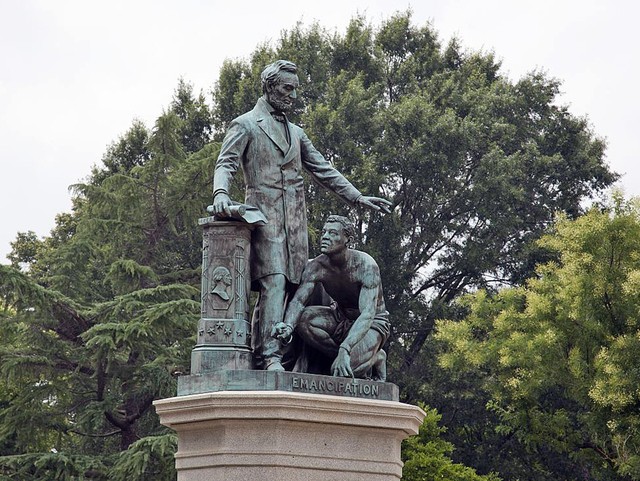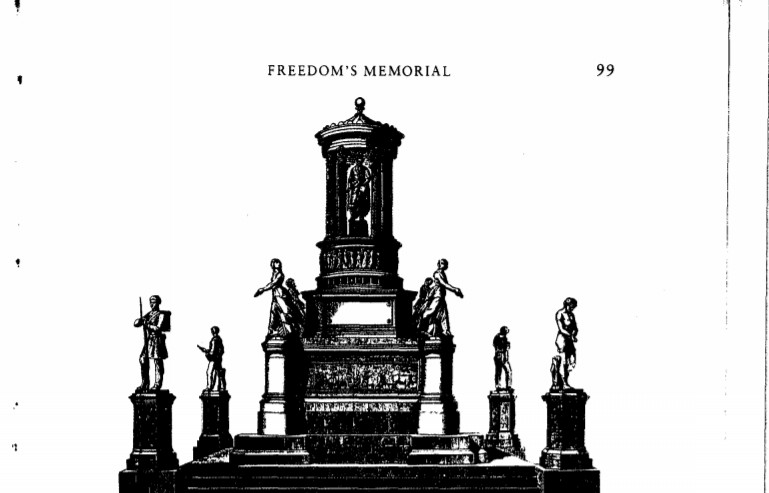Emancipation Statue
Introduction
Text-to-speech Audio
Images
From the perspective of many historians, the statue's design fails to accurately reflect the nature of emancipation during the Civil War by portraying freedom as something that was "given" to former slaves by Executive action.

Henry Highland Garnet announces the campaign to build a monument to Lincoln, The Elevator, August 11, 1865.

Sculptor Harriet Hosmer's design was based on the intent of African American donors. It placed Lincoln at the center surrounded by African Americans who challenged slavery.

Another view of Harriet Hosmer's Freedman's Memorial
.jpg)
Backstory and Context
Text-to-speech Audio
Owing to the costs of this more elaborate monument, and the fact that a statue featuring escaping slaves and Black soldiers would have likely angered white Southerners, the organizers settled upon this design which features Archer Alexander, the last person captured under the Fugitive Slave Act, kneeling before the former President as his chains are broken. 25,000 people attended the dedication ceremony which featured remarks by Frederick Douglass. Among the crowd were members of Congress, former slaves, and President Ulysses S. Grant.
Frederick Douglass delivered the dedication speech which celebrated both Lincoln and the advances made by African Americans since the Civil War. His speech had only mild criticism for the design, which “showed the Negro on his knee when a more manly attitude would have been indicative of freedom.” African Americans such as Henry Highland Garnet who began the movement to raise funds for the monument hoped to place Lincoln and the end of slavery within an interpretive monument that included sculptures of African Americans resisting enslavement through military service and other means. Harriet Hosmer, a sculptor of great fame at that period, suggested that the figure of the slave should be clutching a rifle.
Sources
Savage, Kirk. "Molding Emancipation: John Quincy Adams Ward's "The Freedman" and the Meaning of the Civil War." Art Institute of Chicago Museum Studies 27, no. 1 (2001): 26-101. Accessed June 16, 2020. doi:10.2307/4102837.
Freeman Henry Morris Murray. Emancipation and the Freed in American Sculpture: A Study in Interpretation, 1916. UMI Books on Demand on Google Books, Accessed 6/15/20.
Savage, Kirk. Standing Soldiers, Kneeling Slaves: Race, War, and Monument in Nineteenth-Century America First Edition. Princeton University Press, 1999, 89-99.
Ryerson and Burnham Libraries, printed in Kirk Savage's article, Molding Emancipation: John Quincy Adams Ward's "The Freedman" and the Meaning of the Civil War
